This is the second part of my attempt to share out a month-long unit in my classrooms around creating digital picture books that center on the theme of math. Yesterday, I shared some of the links to the books themselves and one of the movies that I made by converting the Powerpoint files into video. (see part one) I will be sharing another movie with each of these posts.
By the way, this idea of digital picture books is also the topic of a chapter I have written for a book I am co-editing that centers on the concept of how technology may be changing the way we look at writing in the classroom, with a special emphasis on how teachers are handling the assessment of such work and balancing these changes with the increased state and federal push for standardized testing. (We’ll be sending off the book to our publisher in the coming weeks!)
At the end of the project, I have students take a quick survey as a way for me to gauge how things went overall (I have 80 students in four classes) and also write a quick reflection. I will share out some of the written reflection in the next part of these posts. But I gathered up the results of the survey and turned some of the questions into graphs. I had about 75 students take this survey.
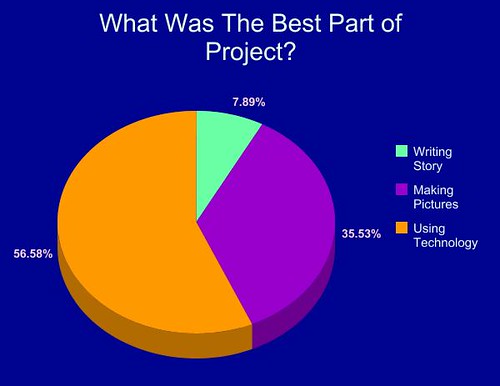
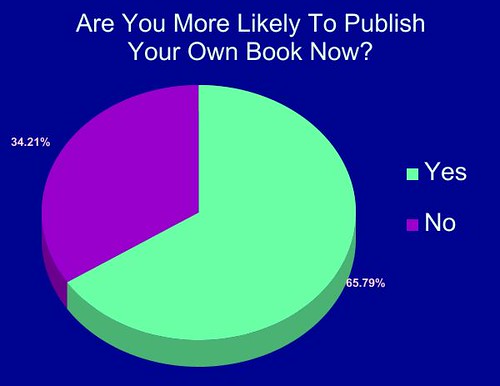
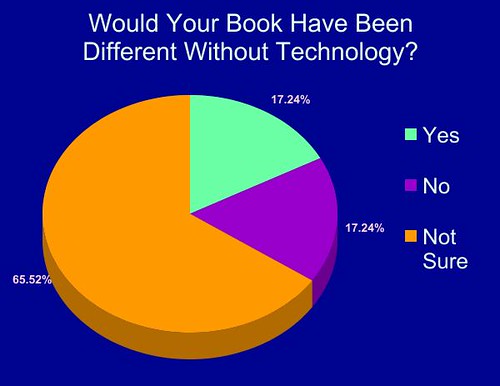



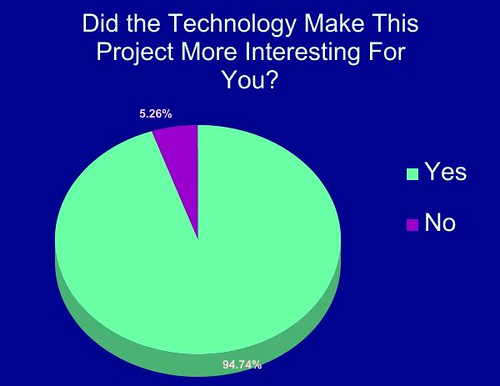
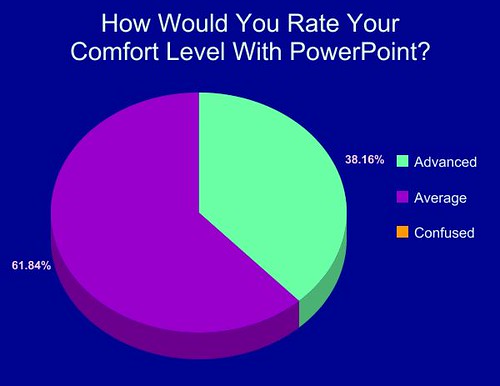
- I always hope this project might spur more students to see themselves as authors and publishers of their own books. Last year, the numbers did not show this interest but this year, more students indicated they might be willing to try to self-publish their own book in the future. This means that writing has value to them. Yeah.
- It’s clear that the technological aspect to the book creation has drawn their interest and made them invest more energy into this project than if I had given them paper and pencils. I see that in the classroom, but it is nice to see it reflected in their own reactions, too. They were very engaged for few weeks on this project. Every day, the question from their mouths: Are we working on the books today?
- The question of whether their book would be different if we had not used technology is an interesting one. Last year, the numbers were high in the column of “yes” but this year, there were a lot of “not sure” responses. I wonder if this is because we could not print them out and they could not see the flat version of their books. Almost everyone used some sort of animation within Powerpoint — moving characters, shifting scenes, etc.
- I ask the Comfort Level question because at the start of the year, only a handful of my students had ever used Powerpoint before. The software has many drawbacks, of course, but I like to show them how to use programs in creative ways. I like to think that I am sending them forth with some knowledge that not everything has to be used as it was designed for and that it is OK to play around and dig deeper into technology to discover possibilities.
Kevin
I’m going to be teaching grade 7-9 math for the first time next year in a 4-12 school. I’d love to do this with my grade 7s. You said that it took the better part of a month; how many classes does this mean? How many instructional minutes?
Thanks for telling us about this neat, authentic assessment!
Thanks for commenting.
We have 45 minute periods five days a week (And I have four different classes of about 20 kids) so my guess would be that we spent about 180 minutes per week on the project. Some of that consisted of mini-lessons, storyboarding, peer review, etc, but a large chunk was also on the computers. I found that drawing the pictures takes the longest amount of time and you could easily halve the project by having kids use clip art. Personally, I want them to “own” the book from start to finish and frown on any sort of clip art. I don’t grade the art but I want it to be original.
Kevin